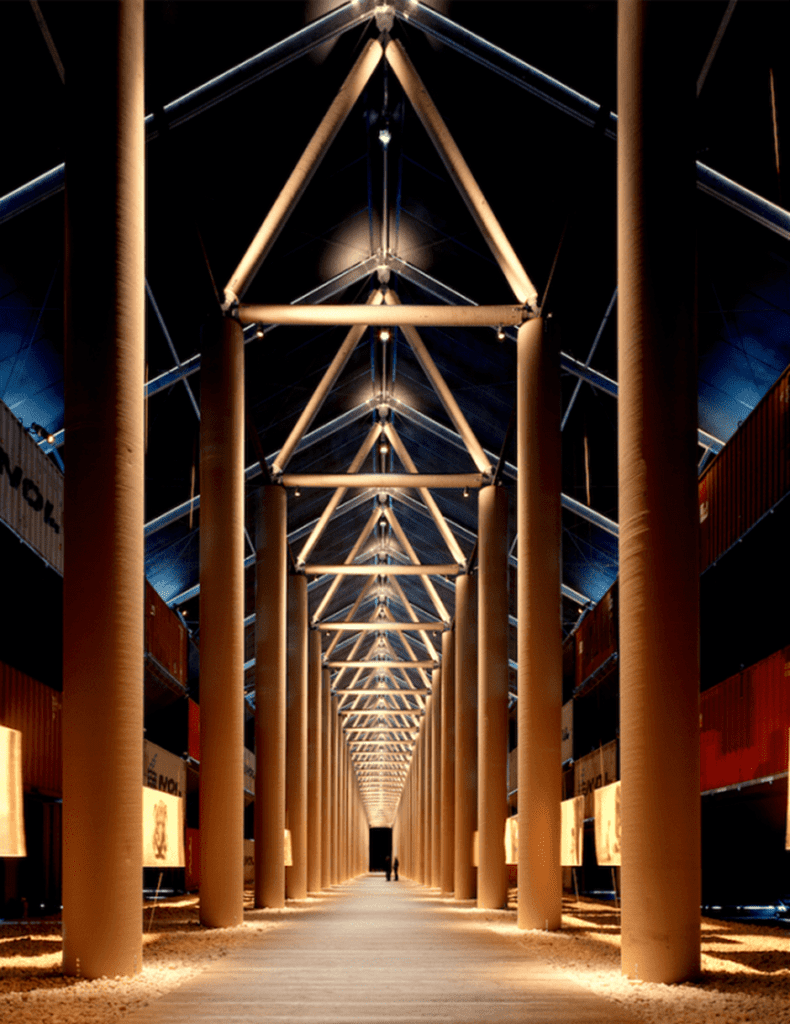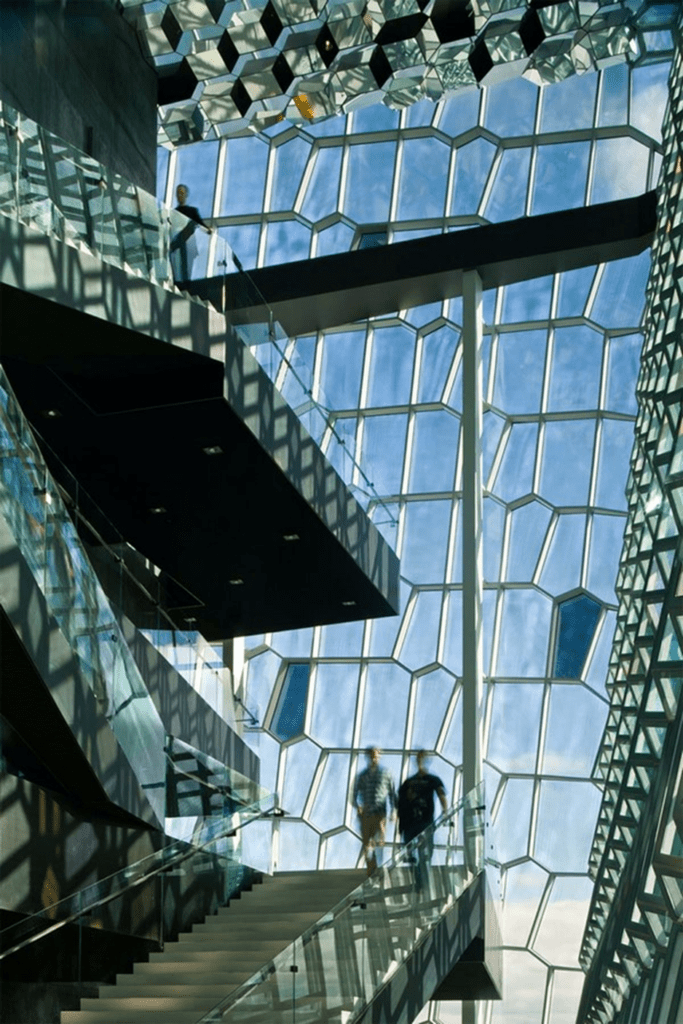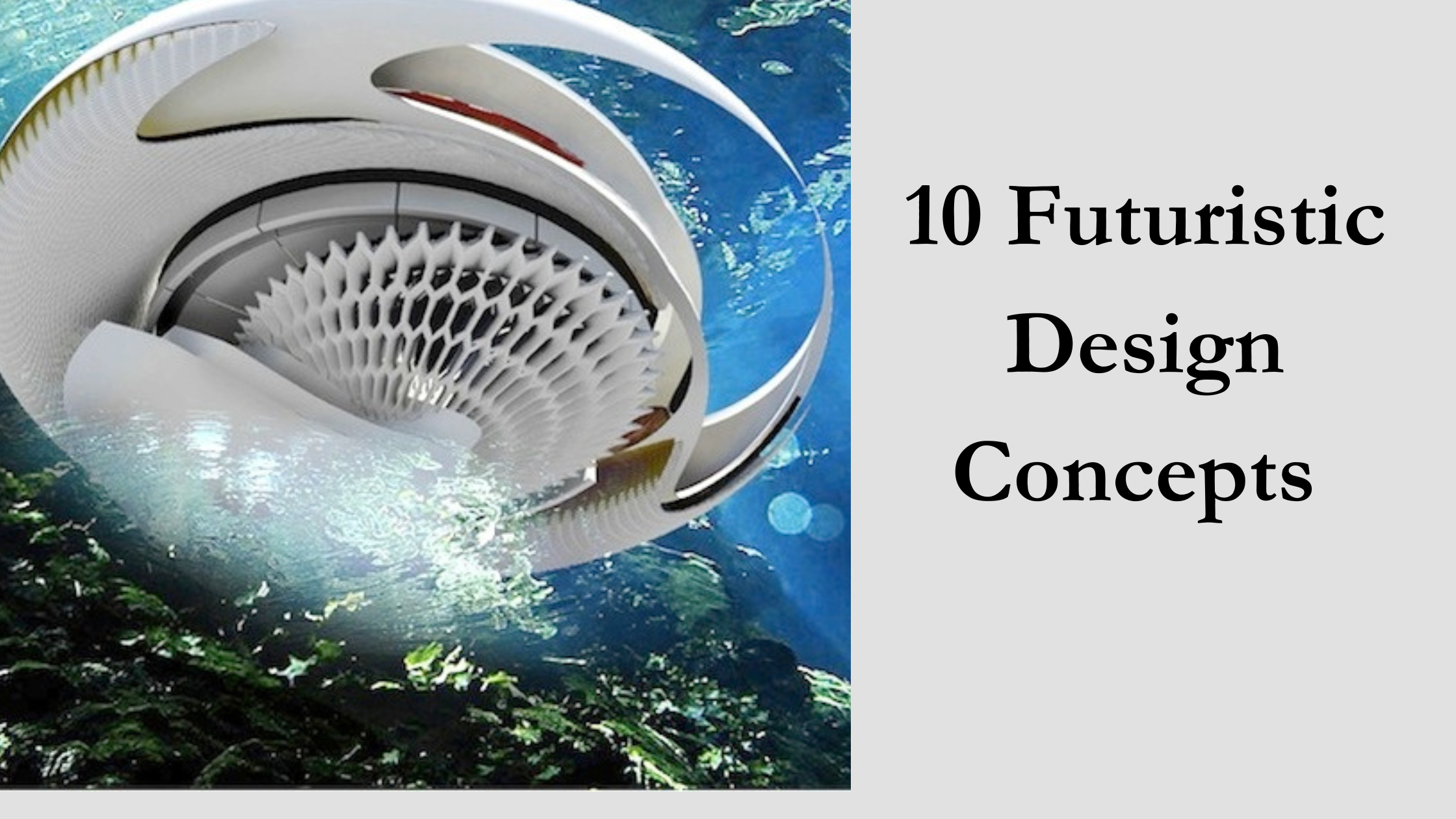Here are 10 Futuristic Design ideas that may be applied to architecture since we are at a point where it can be more than simply a structure: architecture itself is a work of art.
1. Fluid Architecture | Futuristic Design Concepts

Without first considering the stunning, perfect designs of Zaha Hadid or the parametric buildings of Frank Gehry, one cannot begin writing about futuristic design concepts. Architecture may now be more than simply a structure; it can also be considered a work of art. anything to be amazed by.
Fluid architecture prioritizes the building’s form over its intended function. In contrast to contemporary architecture, aesthetics matter. This is only the beginning of how fluid architecture advances formal adaptability and building techniques.
2. Vertical Gardens

The gardens must also rise vertically since there are less open areas as a result of the increased use of concrete, steel, and glass. This strategy provides a long-term solution to the city’s expanding demands.
A vertical garden can be anything from an urban farm to a green facade. Solar energy harvesting and water recycling are advantageous byproducts of the same. Additionally, each homeowner has access to a small area of outdoor space for personal use.
3. Subterranean Architecture

Underground construction is nothing new. Since the earliest ages, people have lived in caves and tunnels. The basements of buildings may be utilized for more than just parking in today’s crowded cities.
Spaces may be isolated considerably more effectively with subterranean constructions than with conventional superstructures. The rock-cut constructions, which may be transformed into modern structures, exude tranquility and tranquillity.
4. Underwater Architecture

The water levels continue to rise due to the daily increase in global warming. In a few years, our shorelines will inevitably disappear. We will need to adjust to the circumstances that will come our way eventually, barring a significant shift in the environment.
A little amount of study has previously been done on the idea of underwater architecture. Underwater sculpture parks and underwater habitats have been suggested by companies like OMA and designers like Yves Behar, respectively. However, much investigation is necessary before diving in, and we should always be certain enough to cause the least amount of disruption to the undersea ecology.
5. On-Water Architecture | Futuristic Design Concepts
With rising water levels and population, we could have to abandon land-based construction in favor of aquatic architecture. Researchers have been interested in aquatic ecosystems for a while, and a lot of study has been done in this area. Even if there is still more to be done, it is a beginning.
Floating cities are an ancient idea in nations like Indonesia where the land mass is heavily encircled by water. This issue was recognized by architect Bjarke Ingles, who created the Urban Rigger as a prototype for Archipelago. It is an entirely sustainable modular student housing concept.
Up to 300 people may live on the buoyant archipelago, which is entirely sustainable. This construction can be grouped together to form a full city, yet it can still fit more people in the same space as cities on land of a similar size!

6. Temporary Architecture
A pandemic is currently affecting the entire world. Other than that, it is experiencing a crisis in some aspect of it. Beyond that, the outside world is also evolving. All of these issues can be solved with temporary architecture. These structures may function as relief camps, temporary hospitals, rescue centres, schools and a lot more.
The works for Shigeru Ban function as an excellent precedence for anyone wanting to investigate this topic. This architect-built shelters for the 310000 individuals who lost their homes to earthquakes using inexpensive, locally found materials like paper tubes, beer crates, and fabric, and that’s only the beginning of his good deeds!

7. Pod Living

The Renowned POD Hotels In Japan Are Well Known To Everybody. In Essence, Pod Living Is Just A Fancy Hostel Where People May Pay To Rent A Bed In A Shared Room And Have Access To Other Communal Areas Like Kitchens And Restrooms.
Pod Living Will Be The Next Big Thing, If It Isn’t Already, Due To Rising Real Estate Prices, A Lack Of Communal Living, And Congestion In The Cities Where The Youth Reside.
8. Space Architecture

Space Architecture will soon be a reality with the eventual human settlement of Mars in the following few decades. However, this is the one for which much investigation will be needed. The architects and designers will have a difficult time dealing with harsh conditions, which include little issues like the inability to repair many items in space.
Though the future of space travel is presently undetermined, space flight and living for 7-8 months in space have already begun!
9. Adaptive Reuse
Reuse that is adaptable has previously existed for some time. Whether it be the High Line in New York or the little ruin pubs in Budapest, adaptive reuse is the type of design that makes use of the existing built environment while giving the structure a new purpose.
Due to the new modifications, there is no trash produced, making this an extremely sustainable approach to design. When ancient GIDCs are transformed into art museums, cafés, offices, lofts, shopping centers, and studios, everything is given an old-world charm. This is a really beneficial strategy!
10. Trash Architecture | Futuristic Design Concepts

Every year, over 2.01 billion tonnes of trash are produced by humans. And we have no idea how to handle it. Use of this trash as construction material is one solution. Under this heading, there have been studies conducted all around the world.
As we transition from oil to renewable resources, Chris Collaris, an architect, has been studying and developing ways to utilize oil transport containers as floating communities. Consequently, accomplishing two goals at once!
Read More: The Future of Smart Speed Bump
Read More: High-Performance Concrete Build Business Case Value
